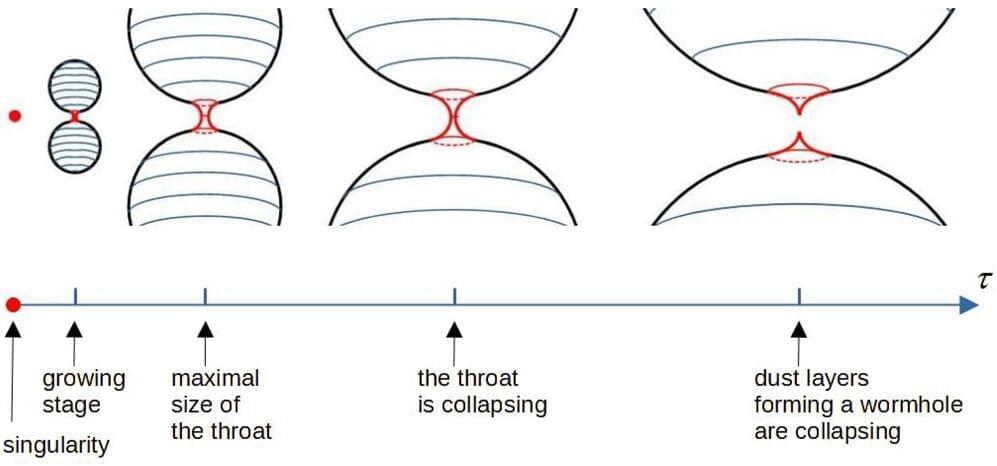What experiments with animal groups can tell us about the possible future of human society.
John Calhoun studied behavior during overcrowding in mice and rats.


The expansion of the universe at some stage of evolution is well described by the Friedmann model. It was derived from general relativity a hundred years ago, but it is still considered one of the most important and relevant cosmological models.
RUDN University astrophysicists have now proven the theoretical possibility of the existence of traversable wormholes in the Friedmann universe. The research is published in the journal Universe.
“A wormhole is a type of highly curved geometry. It resembles a tunnel either between distant regions of the same universe or between different universes. Such structures were first discussed in the framework of solutions to the gravitational field equations a hundred years ago. But the wormholes considered then turned out to be non-traversable even for photons—they could not move from one ‘end of the tunnel’ to the other, not to mention going back,” said Kirill Bronnikov, doctor of physical and mathematical sciences, professor of RUDN University.



In-development space innovations from the private space industry include space cannons, modular space station units, and 3D-printed rockets.


Walmart-backed EV startup Canoo has announced that deliveries of its all-electric commercial van have officially begun – and the first production Canoo LDV 130 vans are already hard at work.
The first batch of Canoo’s electric vans are reportedly in service now at Kingbee, a national work-ready van rental provider. The company says the delivery of vans to Kingbee is consistent with its previously announced “phased ramp-up manufacturing approach,” and asserts that additional customer deliveries will continue throughout 2024.
Canoo had previously delivered vehicles to NASA, the US military, and the State of Oklahoma (its home state) for testing. The vans delivered to Kingbee, however, seem to be the first that will be accessible to “the public.”

Google Deepmind says that a new artificial intelligence system has made a major breakthrough in one of the most difficult tests for AI.
The company says that it has created a new AI system that can solve geometry problems at the level of the very top high-school students.
Geometry is one of the oldest branches of mathematics, but has proven particularly difficult for AI systems to work with. It has been difficult to train them because of a lack of data, and succeeding requires building a system that can take on difficult logical challenges.
Should we colloquially call this ‘MS-DOS 11.0’?